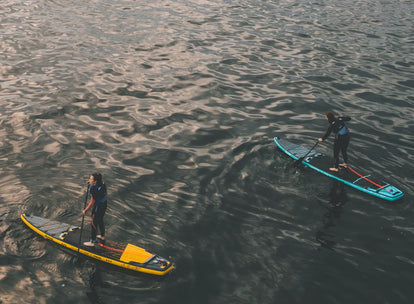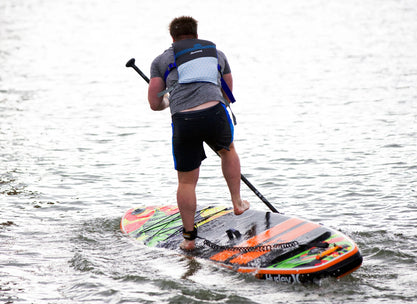You have been planning and dreaming about your next paddle board adventure for what seems like ages, and now the time to set off is finally getting close! However, as wonderful as it is to be an optimist and envision everything going smoothly, it’s also important to think about contingency and what to do should the worst happen. That’s where a float plan comes into play.

A float plan is a detailed itinerary and map which you give to a contact before you head out on your exciting SUP adventure.
The plan should explain where you plan to be, when, and what your contingency plans are should anything go wrong,
There are some brilliant detailed templates out there, but there are four major points that should be covered, and which we’ll expand on a bit more in this article:
- WHO - Who will you be paddling with?
- WHERE - Your route, expected put in and take out points and any “emergency exits” you’ve plotted.
- WHEN - When do you expect to begin and end your trip?
- WHAT TO DO - What to do if you fail to check in or return as expected.
WHO

Who will you be paddling with? Seemingly straightforward, but sometimes the most obvious things do get overlooked!
It’s always better to undertake longer trips with a buddy, and if you are doing this with one or multiple other paddlers, do make sure that their contact details along with emergency contact details for each paddler are listed on your float plan. This means that should any phones run out of power, fall in the drink or even get forgotten, no panic will ensue and what could have been a major disaster will only be a hiccup.
WHERE

Your route, expected put in and take out points and any “emergency exits” you’ve plotted.
It’s always advisable to gain as much information and local knowledge about your route as possible, especially to understand your best spots to enter and exit the river along the way and any tricky or hazardous areas to avoid. It’s important to know what stretches of your route might be bordered by private land, and which areas are public access, as well as where you can stop for sustenance and a loo break if needed!
WHEN

When do you expect to begin and end your trip?
If you’re the kind of person who loves spontaneity and taking things as they come, this might feel like a chore, but we can’t emphasise enough the importance of taking the time to set some goals and write down where you expect to be and when.
This gives you a good idea right away if your pace is not what you expected and you either have time to go a bit further or need to be a bit less ambitious with your trip. This is especially important if you are travelling with others, as the pace may need to be adjusted to fit the abilities of the slowest paddler.
WHAT TO DO

What to do if you fail to check in or return as expected.
Having left your float plan with a trusted contact, you need to make a plan with them of what should be done if you miss a check in time so that you are on the same page in case of emergency.
This allows a sense of assurance on both sides, and will help prevent any extra confusion or problems from arising should the plan need to be put into action!
CONCLUSION

In conclusion, we hope that you have a fantastic trip and that the creation of a float plan is a useful activity which gives you and your loved ones that extra sense of security and helps make your trip a successful one!
Don’t forget to check out our range of Leisure SUP boards for your next adventure, and happy paddling!


